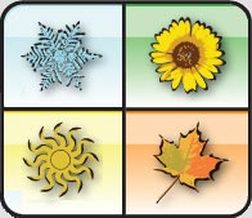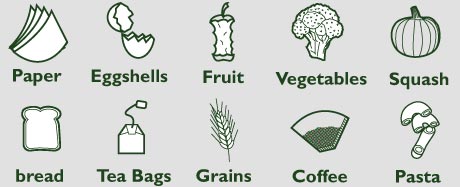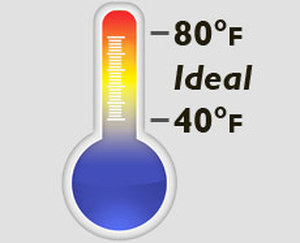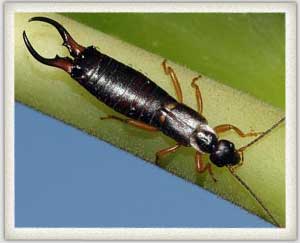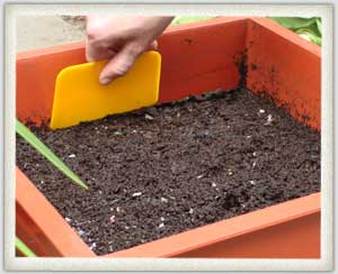Worm Bin Composting 101
A quick guide to worm composting
A quick guide to worm composting
A Brief History of Composting
|
Humans have been composting for thousands of years. In ancient Mesopotamia, Rome, and Greece, there is evidence of composted manure use in agriculture. In North America, there is evidence of Native Americans and settlers using a mix of decaying fish and soil to create compost.
Sir Albert Howard is known as the father of modern composting methods, developed in the 1930s and 1940s, which utilize plant matter, straw, and forest waste in addition to manure. |
This method is based on a traditional Indian composting system known as the Indore method and helps deliver a wide array of nutrients to the soil.
Now compost is used not only to add nutrients to the soil, but also as an amendment to improve soil structure and add beneficial life to soil. Using compost in this way helps to combat the negative effects of over-farming and chemical fertilization and insecticide use |
Traditional vs. Worm Bin Composting
|
All aerobic (using oxygen) composting requires three things: balanced moisture, monitored temperature, and adequate oxygen. Depending on the composting method, the requirements for these three elements will vary, but attention to each is required.
Compost also requires a good ratio of carbon-rich to nitrogen-rich (C:N) material. This helps to maintain a healthy temperature and moisture level, as well as to balance nutrients. Compost also requires a good ratio of carbon-rich to nitrogen-rich (C:N) material. This helps to maintain a healthy temperature and |
moisture level, as well as to balance nutrients.
While traditional backyard heaps compost with heat, a worm bin does not heat up in the same way. In addition, traditional compost heaps can take years to fully mature, while worm bin composting can create the finished product in a few months. The worm bins used for worm composting are often small and can fit in apartments, on porches or balconies, or under the kitchen sink, so that they can be used in urban settings for people without large yards. Here’s a short article on worm bin locations: Worm Bin Location |
What’s so great about Worm Composting?
|
One amazing aspect of composting with worms is that there is no foul odor, so it can be kept anywhere with stable temperatures: inside the house, in a garage, in the basement, outside, you name it! Because of this versatility in location, worm bin composting can take place year-round and can be stored until ready for application to houseplants, container gardens, or backyard gardens.
The compost created by worms (a combination of worm castings (worm poop) and humus, is incredibly nutrient-rich and useful as a soil amendment. More about this under “Using Worm Compost” |
All About Worms
|
There are about 7,000 species of earthworms on earth, and they can be divided into three main types: Anecic (worms who burrow deep in the ground), Endogeic (worms who live in the top few feet of soil), and Epigeic (worms who live on the surface layer of the soil). More information on types of earthworms and worm anatomy can be found here: Earthworms: An Introduction
The best worms to use for composting are Epigeic worms. Since they are surface dwellers who eat decaying organic matter in nature, they are perfectly suited to eat household organic waste in worm bins. The favorite in North America is the Eisenia fetida, or “red wiggler” worm. They are small and reddish brown and are hard workers. They are happy to live in high population densities in worm composting bins and can eat up to half of their weight in organic matter per day. They are also the best adapted worms to handle temperature fluctuations because they live in the top inches of soil and are exposed in nature. For much more information on composting worms, click here: Vermicomposting Worms |
What Food do Worms Eat?
|
Composting worms love kitchen scraps, including vegetables, fruits, grains, coffee and coffee filters, and tea bags (no staples). Their favorite food is melon scraps. Some kitchen foods to avoid are salty foods, citrus, spicy food, oils (such as salad dressing), foods including preservatives, and meat and dairy which can create a foul odor.
Worms will also devour paper scraps such as shredded office paper, junk mail (no glossy paper or plastic envelope windows) , torn paper egg cartons, and torn cardboard. Dry leaves and dead plant matter are also a great addition as long as they don’t carry any plant diseases. Remember the mention of carbon to nitrogen (C:N) ratio from earlier? This is where it comes in. Carbon-rich foods include paper, dry leaves, coffee filters, etc. These can be called “browns”. Nitrogen-rich foods include most kitchen scraps such as fruits and vegetables. These can be called “greens”. Whenever you add “greens”, add an equal amount of “browns”. This helps to manage the moisture level in the worm bin and gives your worms a balanced diet. |
As stated above, “red wiggler” composting worms can eat up to one half of their weight in food per day. The rule of thumb for how often and how much to feed worms is this: if food from a previous feeding is untouched for a few days, cut back. If it disappears quickly, feed more.
Worms can be fed a little each day or a larger amount once a week, and can be left alone for up to a month without getting fresh food. They just need a little extra before a long break. For more details on feeding worms, see this article: What to Put in Your Worm Bin |
Moisture, Temperature, and Oxygen in a Worm Bin
|
Moisture, temperature, and oxygen in a worm bin are easy to manage. A worm bin should be moist but not wet, like a wrung out sponge. The average temperature of the bedding inside the worm bin should be between 40 and 80 degrees Fahrenheit, but for optimum production between 50 and 75 degrees is desirable. In addition worm composting systems are aerobic, which means they operate with the help of oxygen-loving bacteria. It is important to keep the oxygen flow steady in the worm bin. Here is more information on each of these three elements:
|
The Worm Bin Ecosystem
Worm bins house many organisms besides worms. These include beneficial micro- and macro-organisms. The microorganisms found in worm bins include bacteria, fungi, nematodes, and protozoa. These microbes help to break down food so that the worms can digest it. Many of these microorganisms get deposited in the worm castings (worm poop) and are added to the soil. There they continue their beneficial work of breaking down organic material into plant food. They help to create “living soil”, which is the basis of all organic gardening. Here is a short article on microorganisms in worm bin ecosystems: Billions of Microorganisms in the Worm Bin
There are also many macro-organisms who live in worm bins in addition to the worms. Many of these macro-organisms help with the composting process, but some should be gotten rid of. Here is a rundown of likely critters and what to do about them: Bugs! Creepy Crawlies! What’s in my Worm Bin?
Worm bins house many organisms besides worms. These include beneficial micro- and macro-organisms. The microorganisms found in worm bins include bacteria, fungi, nematodes, and protozoa. These microbes help to break down food so that the worms can digest it. Many of these microorganisms get deposited in the worm castings (worm poop) and are added to the soil. There they continue their beneficial work of breaking down organic material into plant food. They help to create “living soil”, which is the basis of all organic gardening. Here is a short article on microorganisms in worm bin ecosystems: Billions of Microorganisms in the Worm Bin
There are also many macro-organisms who live in worm bins in addition to the worms. Many of these macro-organisms help with the composting process, but some should be gotten rid of. Here is a rundown of likely critters and what to do about them: Bugs! Creepy Crawlies! What’s in my Worm Bin?
Using Worm Compost From Your Worm Bin
|
The product of worm bin composting with worms is a mixture of worm castings (worm poop) and humus, or broken down organic material. The castings in this mixture have, on average, 5x the available Nitrogen, 7x the available potash, and .5x the available calcium as average topsoil.
Worm compost can be used outside or inside the house – work it into soil outside before planting or add it to potting soil for houseplants. It can also be used as a top dressing to fertilize plants periodically throughout the season. Worms secrete mucus with their castings that helps form aggregates (clusters) in soil, which in turn increases the ability of soil to retain water. In addition, worm castings suppress plant pests and diseases. In addition to solid fertilizer, composting with worms can create a nutrient-packed liquid runoff called leachate. This is the moisture that seeps out of the compost bin as the organic material inside decomposes. Leachate can be diluted and used as a liquid fertilizer. Worm compost can also be used to make worm tea: suspend worm castings in highly oxygenated water and “brew” to make rich liquid fertilizer. For more information on liquid fertilizers from worm compost, click here: Leachate vs. Worm Compost Tea |
Worm Bins
There are various types of worm bins for worm composting. Some are huge and are used to reduce commercial waste, while others are small enough to fit in an apartment or on a balcony. In addition to size variations, there are operational differences. Some commercial worm bins use stacking systems with trays, while some people build their own that are in just one chamber made from a Rubbermaid bin. People also compost with worms outside in windows or use flow-through systems.
Get Started


